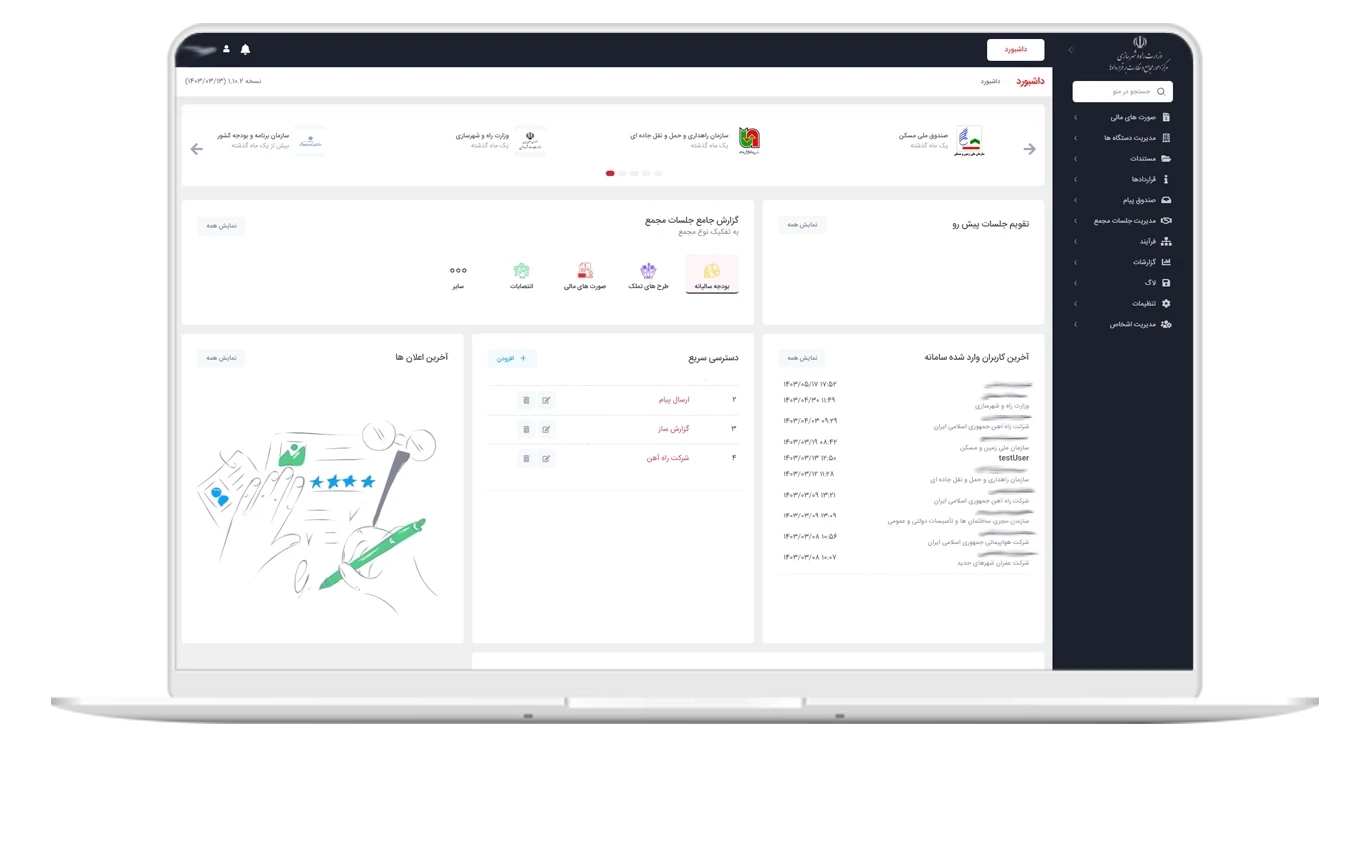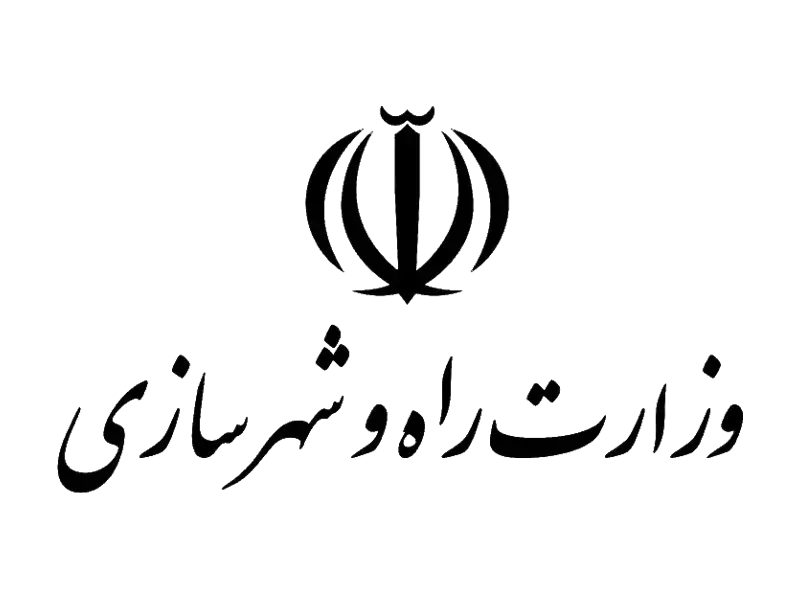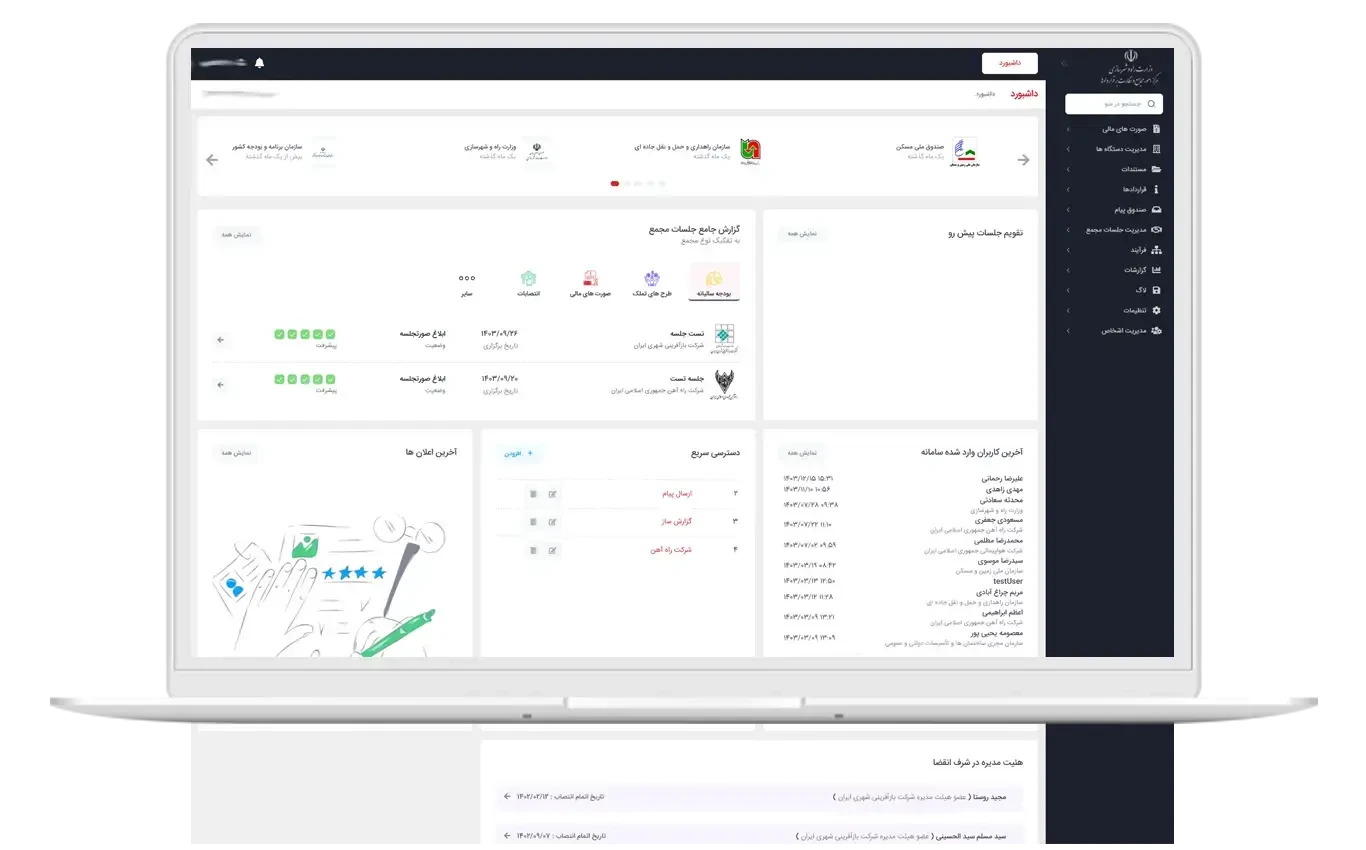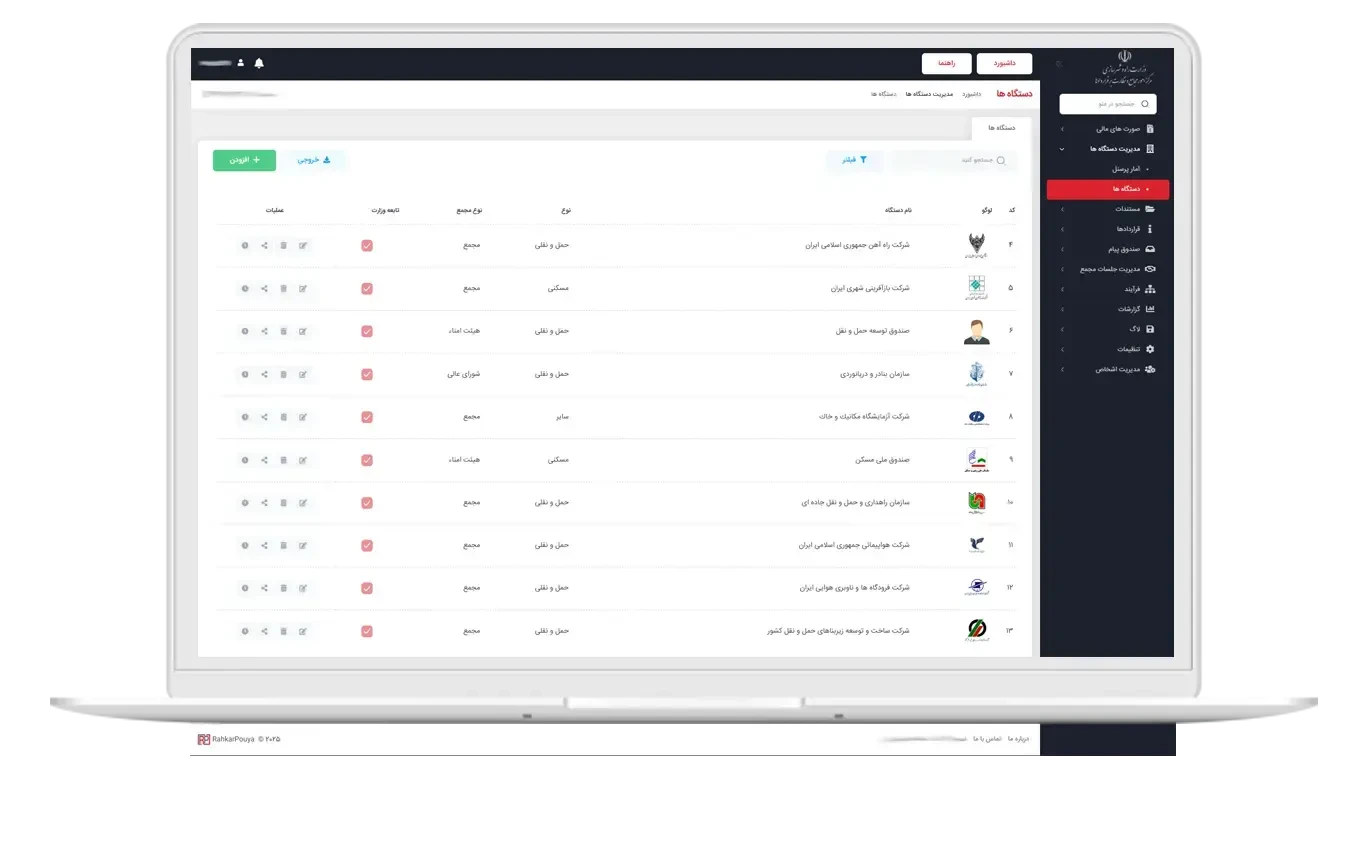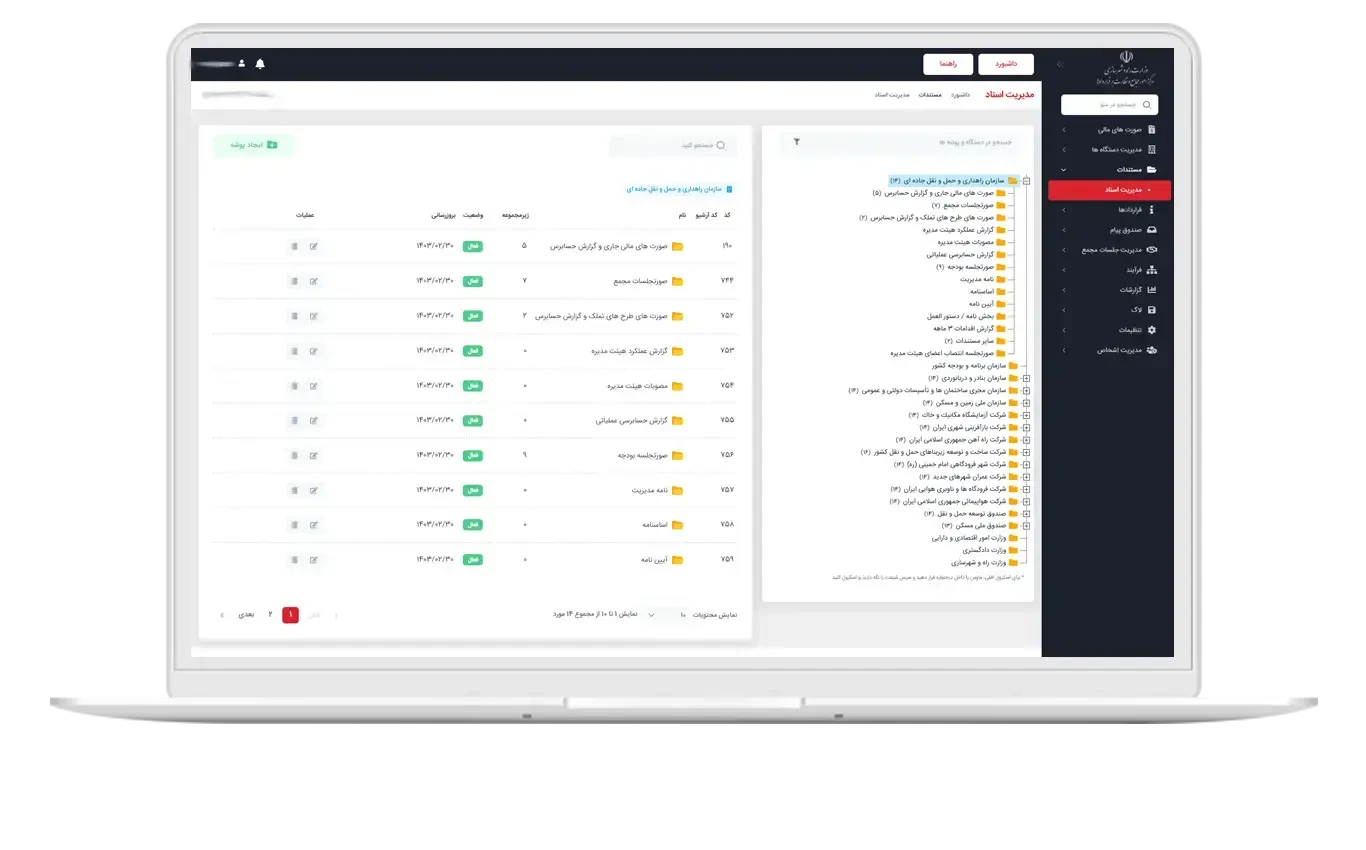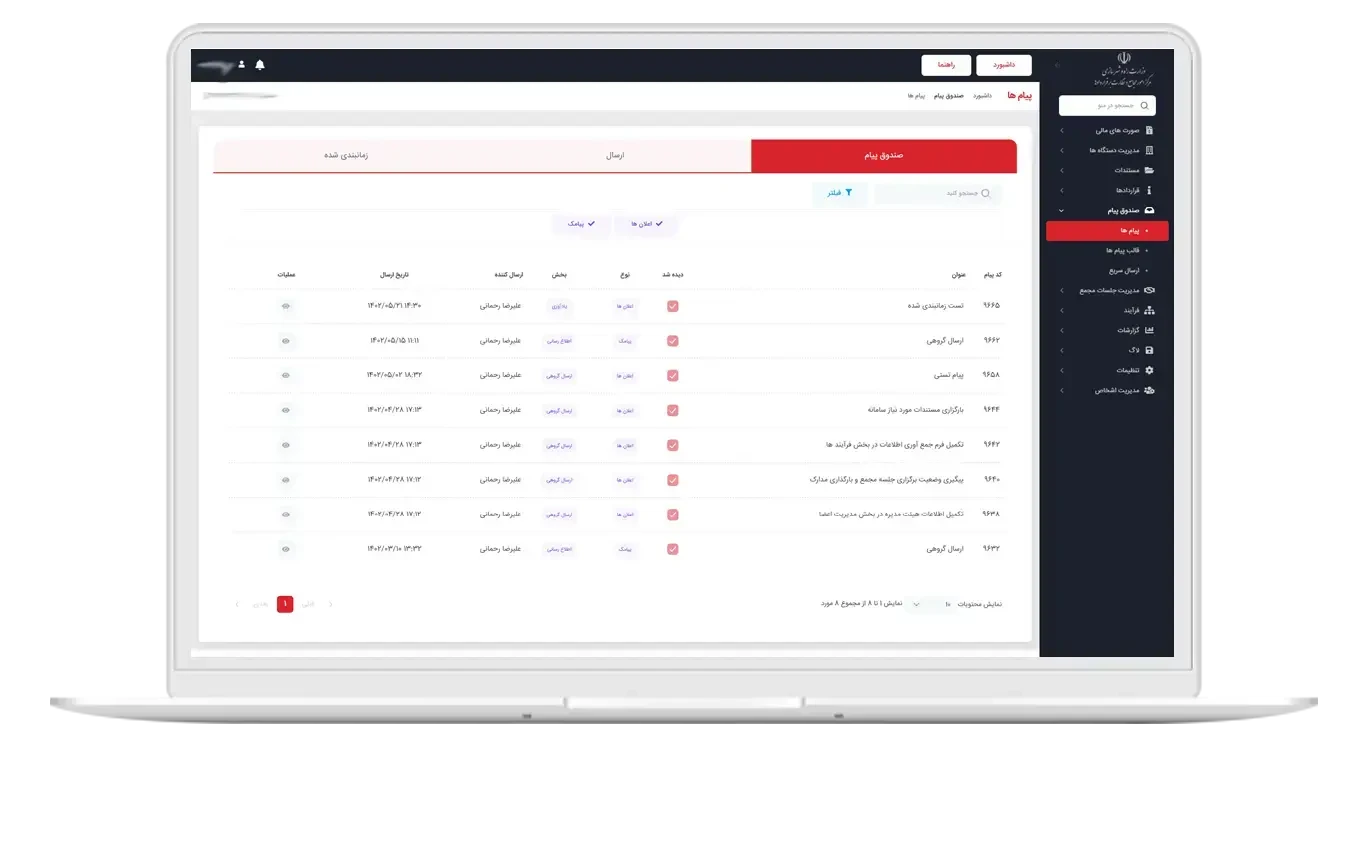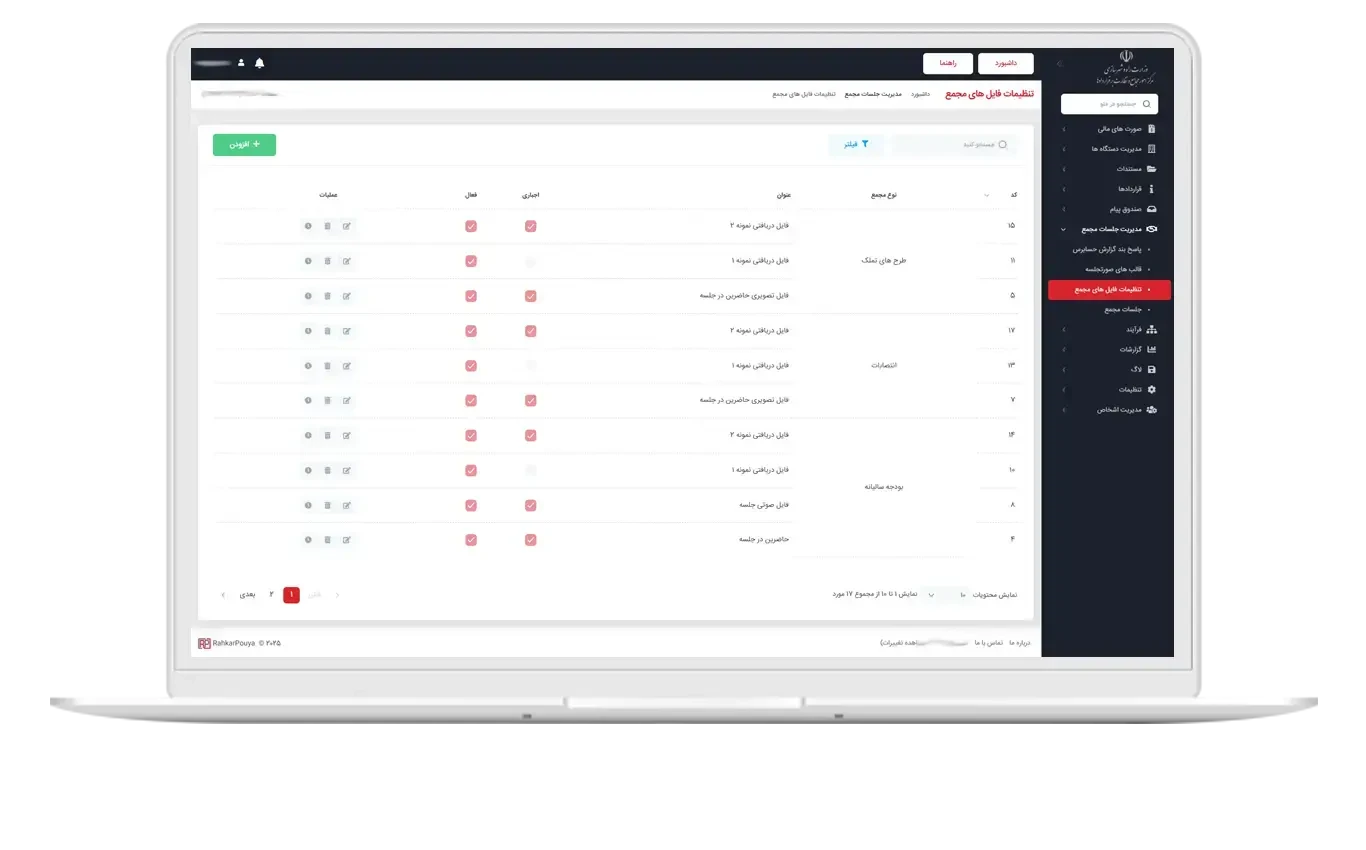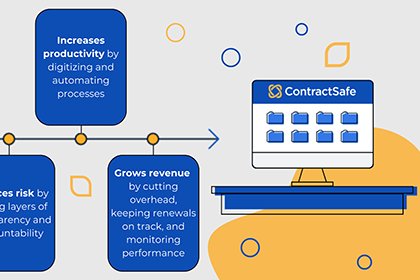The General Assembly and Contract Supervision System of the Ministry of Roads and Urban Development
Digital transformations in e-government have created a new opportunity for optimizing and clarifying organizational processes. One of the successful examples of this transformation is the design and implementation of the General Assembly and Contract Supervision System of the Ministry of Roads and Urban Development. This system was launched with the aim of managing meetings, recording and storing documents, supervising contracts, and data integrity, and has played a significant role in enhancing efficiency and transparency.
Introduction to the General Assembly and Contract Supervision System Project
The project of the General Assembly and Contract Supervision System of the Ministry of Roads and Urban Development was designed and implemented with a comprehensive approach to managing information, meetings, and contracts. This web-based system provides data exchange capabilities with other key systems of the ministry, such as the financial accounting system, project management system, and human resources system.
Challenges Existing Before Project Implementation
- Lack of integration in managing meetings and minutes
- Large volume of paper documents and archiving problems
- Lack of transparency in contract supervision processes
- Time-consuming and costly management of personnel and organizational information
Key Objectives of the Project
- Establishing a Contract Management System for greater transparency
- Complete digitization of meetings and minutes
- Automation of processes and reduction of organizational bureaucracy
- Quick and online access to information and documents
Modules of the General Assembly System
1. Management of Board Members and Key Executives Information
This section registers and manages identity information, resumes, issued decrees, work history, and the organizational chart of companies and affiliated organizations. This module helps managers to have a complete picture of the executives and key members of the organization.
2. Management of Meetings and Councils
One of the most important parts of the system is the meetings module. This section includes the ability to record minutes, store backup documents (video, audio, invitations), automatic numbering of meetings, and tracking electronic signatures. The decisions made in meetings are archived digitally and are searchable.
3. Management of Personnel Statistical Information
This module stores information about personnel working in affiliated companies and organizations based on employment type, gender, educational background, and other indicators. Managers can obtain analytical and comparative reports for human resource planning.
4. Management of Legal Documents and Records
The system allows for scanning and storing documents, searching content within documents, and printing selected sections. Additionally, user access to documents is managed accurately while observing security standards.
5. Dynamic Reporting and Data Analysis Module
The system administrator can create dynamic reports and save them in various formats (PDF, Excel, Word, XML). This module helps managers analyze data and make more informed decisions.
6. Integration with Other Organizational Systems
The General Assembly System is connected to the following systems:
- Financial accounting system for exchanging information on revenues, expenses, and budgets
- Project management system for controlling contracts and construction projects
- Human resources and payroll system for managing personnel information
- Office automation for exchanging invitations and minutes
Achievements of the General Assembly System
Transparency and Reduction of Administrative Corruption
The registration and digital management of contracts and meetings have minimized the potential for misuse and human error.
Increased Organizational Productivity
By eliminating bureaucracy and reducing paperwork, the time taken for processes has decreased by up to 40%.
Management Data Analysis
The ability to create analytical reports has enabled managers to make faster and more accurate decisions.
Conclusion
The General Assembly System of the Ministry of Roads and Urban Development is a successful example of implementing digital transformation at the national level. This system was able to enhance transparency and productivity while serving as a model for other governmental organizations in the process of implementing e-government.
Frequently Asked Questions (FAQ)
1. What sections does the General Assembly System consist of?
This system includes the management of board members, meeting management, personnel information management, document management, dynamic reporting, and integration with other systems.
2. Is the General Assembly System exclusive to the Ministry of Roads?
No, this system is designed in a modular way and can be customized for other ministries and organizations as well.
3. Is there a possibility of searching within document texts?
Yes, users can search the text of minutes and legal documents and quickly view the results.
4. What benefits does it provide to managers?
Managers can receive analytical reports, oversee contracts, and transparently track the progress of meetings.
5. How is data security ensured?
Data security is ensured through the use of security standards, user access management, and activity logging.
6. Is this system connected to other financial and personnel systems?
Yes, the General Assembly System is integrated with financial, accounting, project management, and human resources systems.
